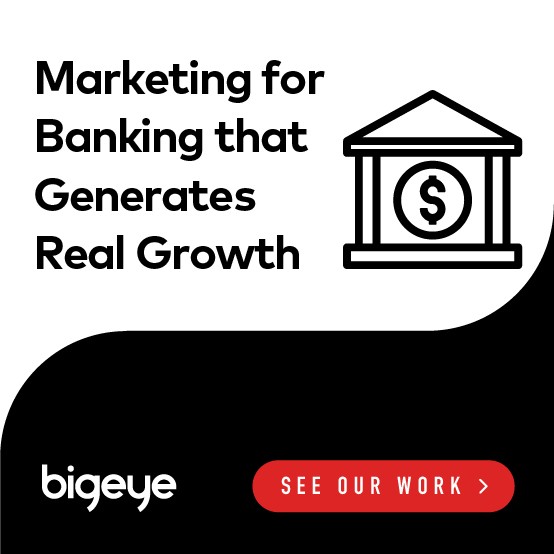
It would be oh so simple for a bank to forgo newer methods of communicating – such as social media.
After all, to someone less familiar with social networks like Facebook and Twitter, these online channels all seem like places where people personally love to play, not conduct or discuss serious business. And financial institutions – especially the ones that have been around for awhile – often like to uphold a solid, traditional image, far from anything hip and trendy.
Unfortunately, as any teen or twenty-something can tell you – or maybe should be telling your institution’s decision-makers – today and tomorrow’s customers are actually the ones spending time on these networks. Like it or not, they’re the audience banks need to connect with – to some extent – if you want to remain profitable. If you manage your brand properly and tell your story well, you can still use modern platforms and search engines as outreach tools to describe your longevity and values. The difference is, you need to show your current and prospective customer that your institution is not only in touch, but also looking toward the future.
Beyond a basic social media presence, or hoping users “like” or follow your bank’s activities, your bank marketing ideas should also consist of spending money for additional exposure. Most larger social networks and search engines now encourage businesses to pay to put their messages in front of more people, or at least target different demographic groups of potential customers.
Like many other industries, bank marketers also have the ability find other ways to purchase advertising, whether it’s buying common keywords that customers may use when conducting a search, or running online ads designed for a specific target audience. Though budgets may reflect a preference toward financial marketing approaches that are low to no-cost, in the current online economy, you are definitely able to obtain a farther reach – and likely a better return – if you’re willing to make the investment in a paid ad campaign.
Here are 7 smart ways banks can utilize these paid ad campaigns to generate the greatest ROI
Facebook audiences won’t see everything you put out there – The actual number is a little vague, and depends on your audience, in tandem with Facebook’s method of determining what individual users see. While Facebook states that your audience will organically see just 16 percent of your posts, no matter how interesting or clever you make them, other media professionals and search experts say this figure may be as low as 2.27 percent for pages with more than 500,000 likes. (If “organic” is a new term for your marketing team when used in this context, it describes how people come across your information naturally, on their news feeds. Your inorganic reach means that you can pay a bit extra to have more seen by a larger audience.) Facebook offers a variety of payment options, from a small daily amount over time for a certain-sized audience to larger amounts designed to reach more people.
Consider boosting – Along with creating a paid campaign for your news feed to be seen by a larger target demographic, Facebook business page owners also have the option to pay to boost the reach of individual posts, placing them higher in people’s regular news feeds. This could be handy for a particular promotion, event, or contest. It also is a good tool to measure the amount of traffic with or without boosts for similar campaigns. If you see a noticeable spike in participation – such as actual new business and “real life” customer activity — it could be a good indicator that investing in boosting truly attains tangible results.
Frequency works – Just like the old adage states that a marketer shouldn’t buy an old-school newspaper, radio, or TV ad for only one day for an ongoing campaign, it is also advised that you not run a Facebook business page, or a post, for just a short time. Even though you may be following best practices and posting new material several times per day, not everyone will be checking in regularly to see it. Or, with all the clutter out there, they may not notice your ad or post the first few times it appears. It is wise to plan on running any campaign for at least one month – this will give you a longer-term view to gauge your response rate over time, and then you may adjust your message, or the scope of it, as needed.
Target your audience – As unbelievably cool as the fantasy would be for every Facebook user to see and love your bank’s message, it’s a smarter bet that not everyone among the 1.65 billion active users will care about your bank’s ads. So when you’re planning your paid bank advertising, you may be able to target your ideal potential customer by selecting gender, age, geographic location and similar demographic information. This will be a better use of your budget by appealing directly to people who are more likely to want to know more info about your institution rather than “anyone out there.”
Try other networks – Other social media companies also allow you to buy general and targeted ads, especially if you think potential customers will be using their services. LinkedIn, for instance, is more of a professional network, lacking the games and general feel of Facebook. This site focuses more on workplace networking, so there are posts about economic sectors, employment trends, management strategies, hiring tips, and labor issues. Banks wanting to attract certain potential customers or employees on LinkedIn can purchase ads and target everything from certain job titles to geographic areas. Though actual ad space is limited to a few dozen characters, you may include a call to action. This demographic group should be quite familiar with you, and in turn, want to know more.
Run multiple campaigns at once – Since marketing is always in motion, it’s smart to focus on one more than one prong at a time for all of your outreach. This is also of benefit for your audience – not every online user will use every network. Some may prefer Facebook, but others may frequent Instagram, Pinterest, Tumblr, Snapchat, or any of the common platforms or search engines more regularly. Running multiple campaigns simultaneously will also provide you with a chance to customize your message for different platforms, and adjust as needed.
Easy-to-see results – A good bank PPC campaign has the potential to provide all sorts of data – starting with who was reached and how they responded to your message or multiple messages. Google Ad Words or similar analytics programs share both high and low points, including the most frequently clicked keywords, where people came from, what percentage went directly to the landing page, how long they stayed, and what times of the day, week, or month saw the most activity. If you’re working with someone proficient with Google AdWords, you will also have access to a general Return on Investment figure based upon how much you spent and your overall reach. Actual conversions from the campaign to customers can also be a strong indicator.
Overall, creating a bank paid search campaign can be a fun way to connect with potential new users, while also enhancing relationships with existing customers. While facilitating paid ads via your institution’s social networks may be considered “unchartered waters,” the return is well worth the investment, with campaigns that may be customized, and that offer measurable results. For more information on the paid advertising approach, and the development of the best strategy to meet your needs, contact our team of digital experts today!



